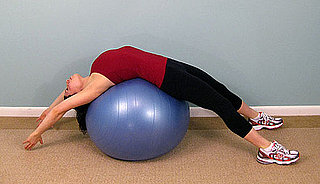By this point, you will have heard the term "twerk" or "twerking" far too often for comfort from sources ranging from MTV to NPR. If you haven't seen the ill-fated "Twerk by Fire" YouTube video by now, well, you should. I have more than a few choice words to say about all the publicity the long-existing term "twerk" is currently receiving in the media. However, I will limit myself to two points that I feel compelled to make.
First, I would like to do my best to educate the world on how to properly twerk (or at least proper twerking techniques for spinal mobility).
Second, I feel it is in everyone's best interest if we reduce the number of people going around twerking like Miley and making themselves look
extra.
But as it applies to scoliosis, twerking is actually a great way to liberate the tightness of the lumbar spine. Like me (and most?), you've watched those rap videos and have pondered the great question of twerking:
How the hell do they pop their booties like that? I'd be willing to put money on it that if you can twerk like these ladies, you don't have scoliosis problems!
But have no fear: I'll be your
twerking spirit guide.
Twerking for Scoliosis! How to Guide:
Step 1: Stand with your feet about two feet apart in a wide horse stance. A horse stance is the beginning wide stance for tai chi exercise and a wonderful centering, spinal stabilizing pose to practice. To achieve the proper horse stance, stand tall with the feet touching each other. Slowly toe-heel you feet apart until there are about 2-3 feet between your feet. (The wider the space, the more difficult the twerking will be and also the better the stretch for your lower back.) Slowly bend the knees being sure to keep the knees pointed in the same direction at the toes. If you're doing it with proper form, your toes should be pointing directly in front of you and thus your knees should be facing the front as well.
Step 2: Put your hands on your knees. Begin to tap your right heel to the beat of the song you are listening to. (You are listening to a song, right? If not, pick a jam from my playlist to the right! I find it's much more fun to do dancing exercises with good music keeping me going.) Tap only your right heel. Keep your left foot planted soundly on the ground. Do this movement for around 30 seconds. You should begin to feel your right lower lumbar spine start to loosen up.
Step 3: So, your back should start to feel more loose and, if you're like me, you should start naturally moving your back in a stiff twerking motion. However, keep going through these steps unless you feel bold. Stop tapping your right heel and plant it back on the ground. Keep moving in the stiff twerking motion with both feet on the ground.
This movement should look like a standing cat-cow yoga pose with 1) cat: the torso opening and booty slightly curving outward and back and 2) cow: close or hunch the back with the booty coming back to resting. Work this movement for another 30 seconds to a minute to the beat, girl! At this point, I'm hoping you already look better than Miley.
Step 4: Your spine should be loose enough by this point to start advancing your twerk. On the out-booty pop motion (cow yoga pose), begin to pop the booty up. Then return to your resting booty pose. Remember to be in your horse pose for this entire exercise.
Step 5: Continue practice the out-booty pop motion to the beat of your favorite jam. Eventually, your lower spine will feel free enough to easily pop the booty out and up. With time, your will learn muscular control which will making the movement even easier and improve your tight lower back issues.
Work that booty and please help to end twerking disasters from occurring around the world!
.jpg)


.jpg)





































